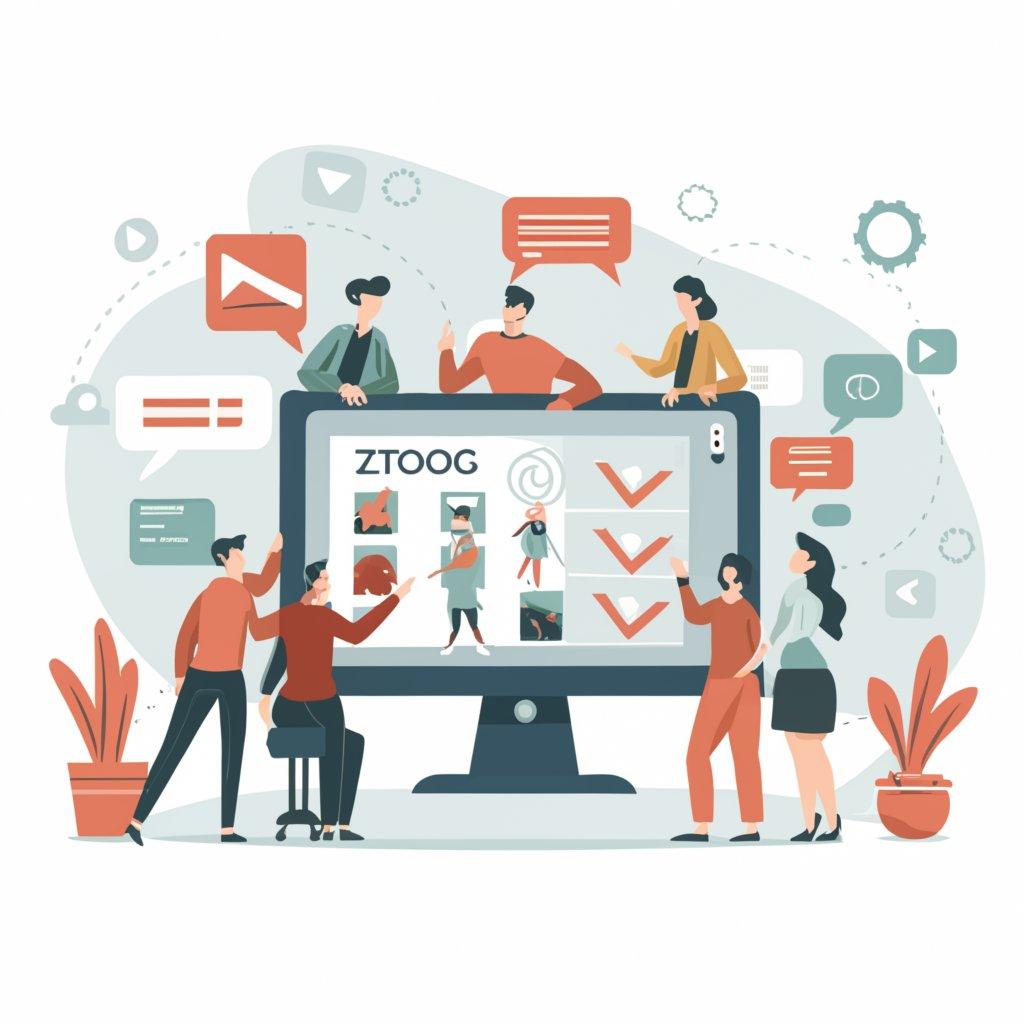Have you ever tried to unravel the mystery of “listcarlwers”? Perhaps it’s just a jumble of letters at first glance, but what if I told you that within those scrambled letters lies a key to unlocking your creativity? In this blog post, we will delve into the art of reversing words and how it can ignite your imagination like never before. Get ready to think outside the box and embark on a journey where storytelling takes on a whole new twist!
Understanding
Ever wondered what lies beneath the surface of scrambled words like “listcarlwers”? Understanding the concept of reversing text is like peeling back layers of a story to reveal its hidden depths. It’s about challenging conventions and embracing a fresh perspective on language. By flipping words around, we invite chaos to give birth to creativity.
When we grasp the essence of reversing, we open doors to endless possibilities in storytelling. It’s not just about rearranging letters; it’s about reshaping narratives and breathing life into unconventional tales. Embracing this unique approach allows us to break free from traditional structures and let our imagination run wild.
So, dive into the world of “listcarlwers” with an open mind and a willingness to explore the unconventional. Let go of preconceived notions and allow yourself to be swept away by the magic that unfolds when words are turned upside down.
Ways to Overcome
Looking for ways to overcome the creative block that’s been holding you back? Here are some strategies to help you break free from the constraints of traditional writing methods and unleash your imagination in new and unexpected ways.
One effective approach is to experiment with reversing your writing process. By starting at the end and working backwards, you can challenge yourself to think outside the box and craft a narrative that defies linear conventions.
Another way to overcome creative obstacles is by mixing up the timeline of your story. By rearranging events or introducing non-linear storytelling techniques, you can create intrigue and keep readers on their toes.
Don’t be afraid to embrace unconventional methods like decoding scrambled words or phrases. This exercise can spark fresh ideas and inspire unique storytelling angles that may have been hidden beneath the surface.
So, if you’re feeling stuck in a rut with your writing, consider trying out these alternative approaches to unlock your creativity and breathe new life into your stories.
The Benefits of Reversing
Reversing the traditional way of writing can bring a wave of fresh creativity and innovation to your storytelling. By flipping the script, you challenge yourself to think outside the box and explore new avenues of expression.
One major benefit of reversing is that it allows you to approach your narrative from a different perspective, leading to unexpected plot twists and character developments. It forces you to break free from linear thinking and embrace nonlinear storytelling.
Reversing also helps in building suspense and intrigue as readers are kept guessing about what will happen next or how the story will unfold. This technique adds depth and complexity to your writing, making it more engaging for your audience.
Additionally, reversing can spark inspiration by pushing you out of your comfort zone and encouraging experimentation with language, structure, and themes. It opens up a world of possibilities for unique storytelling techniques that can set your work apart from the rest.
Embrace the benefits of reversing in creative writing as a tool for pushing boundaries, igniting imagination, and crafting compelling narratives that captivate readers from start to finish.
Exercise #1: Writing a Story Backwards
Imagine a world where stories unfold in reverse, where endings lead to beginnings. Picture characters moving backward through time, unraveling the plot in unexpected ways.
In this exercise, challenge yourself to think differently about storytelling. Start at the end and work your way back to the beginning. How does this change the narrative? What new perspectives emerge?
By flipping the traditional structure on its head, you can uncover hidden depths in your writing. Delve into the minds of your characters as their journeys take a unique trajectory from conclusion to inception.
Experiment with this technique and see how it transforms your creative process. Embrace the unconventional approach and let your imagination run wild as you explore the possibilities of storytelling in reverse.
Exercise #2: Starting with the Ending
Ever thought about flipping your writing process on its head? Exercise #2 challenges you to do just that. Instead of starting from the beginning like usual, begin with the ending in mind. Imagine a powerful conclusion and work your way backward to unveil how the story unfolds.
By starting with the ending, you set a clear destination for your narrative journey. This approach can infuse your storytelling with unexpected twists and turns, keeping both you and your readers engaged till the very last word.
Embrace this exercise as an opportunity to explore new creative pathways. Allow yourself to be surprised by where your reverse storytelling takes you. Who knows what hidden gems you may uncover by working in reverse?
Dive into this exercise with an open mind and let the backwards flow of words lead you towards uncharted territories of imagination and expression.
Exercise #3: Mixing Up the Timeline
Ever felt stuck in a creative rut? Need a fresh perspective on storytelling? Try mixing up the timeline! Instead of following a linear path, shake things up by jumping back and forth between past, present, and future. This exercise challenges your writing skills and pushes you to think outside the box.
By rearranging the sequence of events, you create intrigue for readers as they try to piece together the story. Start with an action-packed scene from the climax or reveal a character’s backstory before introducing them. Playing with time adds depth and complexity to your narrative, keeping readers engaged until the very end.
Experiment with flashbacks, flash-forwards, or even parallel timelines to add layers of meaning to your writing. Don’t be afraid to break traditional storytelling rules – embrace the chaos and see where it leads you. Mixing up the timeline can unlock new possibilities and breathe life into your storytelling arsenal.
Unraveling the Mystery: Decoding “listcarlwers”
Unraveling the mystery of “listcarlwers” is like solving a perplexing puzzle that teases your creative instincts. It’s not just about rearranging letters; it’s about delving into the depths of imagination and storytelling.
Decoding “listcarlwers” sparks a sense of curiosity, challenging you to think beyond conventional writing practices. It invites you to explore new perspectives and unconventional narrative structures, pushing the boundaries of your creativity.
As you decipher the scrambled word, each letter becomes a piece of a larger picture waiting to be unveiled. It’s an exercise in unraveling hidden meanings and uncovering unexpected connections that breathe life into your writing.
By engaging with the enigma of listcarlwers, you embark on a journey where words transform into tools for crafting unique narratives brimming with depth and intrigue. Embrace the challenge, let your imagination run wild, and watch as the mystery unfolds before your eyes.
From Jumbled Letters to Compelling Narratives
Imagine a world where words are like puzzle pieces waiting to be rearranged, where jumbled letters hold the key to unlocking captivating stories. From scrambled chaos emerges a new realm of creativity, where the unconventional becomes the norm.
By taking a string of letters like “listcarlwers” and reshuffling them with intent, writers embark on a journey of discovery. Each twist and turn in rearranging those letters unveils hidden narratives waiting to be unraveled.
It’s not just about playing with words; it’s about delving into the unknown and challenging traditional storytelling norms. The process of transforming jumbled letters into compelling narratives is both an art and a science—a delicate balance between structure and imagination.
As writers embrace this exercise, they tap into their innovative spirits, pushing boundaries and crafting unique tales that defy expectations. In this world of reversed creativity, anything is possible—where chaos leads to coherence, and disorder sparks inspiration.
Reversing the Trend: Sparking Creativity through Word Play
Creativity thrives on novelty and experimentation. One way to inject a fresh perspective into your writing is by reversing the trend through word play. By flipping words around, rearranging letters, or starting from the end, you can unlock new pathways for your imagination to wander.
Think of language as a puzzle waiting to be solved in unconventional ways. Reverse engineering your thoughts can lead to unexpected discoveries and unique storytelling angles. Embrace the challenge of playing with words in ways that defy traditional conventions.
Don’t be afraid to shake up the status quo and push beyond the boundaries of conventional writing practices. Embracing word play allows you to break free from structured thinking and tap into a realm of boundless creativity. Let your imagination run wild as you explore the endless possibilities hidden within reversed text.
Engage with language in a playful manner, treating each word as a building block for constructing innovative narratives. By reversing the trend and diving headfirst into word play, you open up doors to uncharted territories of storytelling potential. Experimentation is key when it comes to sparking fresh ideas and breathing life into your writing projects.
Putting the Pieces Together: Constructing Stories from Scrambled Words
Ever thought about the magic of rearranging letters to create a whole new world within words? Constructing stories from scrambled words is like solving a puzzle where every piece fits perfectly, forming a tapestry of imagination and creativity.
When you shuffle letters around, you’re not just playing with words; you’re unraveling hidden narratives waiting to be discovered. It’s like piecing together fragments of a story that were scattered but now come together in harmony.
Just as a jigsaw puzzle challenges your mind, rearranging scrambled words challenges your creativity. Each word holds endless possibilities, waiting for the right arrangement to unlock its full potential.
Constructing stories from scrambled words is an exercise in innovation and thinking outside the box. It pushes you to see beyond what’s obvious and delve into the depths of linguistic exploration.
So, grab those mixed-up letters and start putting the pieces together to craft unique tales that surprise even yourself.
The Power of Reverse Engineering: Unlocking Imaginative Potential
Ever considered flipping the script on your writing process to unleash a whole new realm of creativity? Reverse engineering your storytelling can be the key to unlocking untapped imaginative potential. By starting from the end and working backward, you challenge yourself to think in unconventional ways and craft narratives that surprise even you.
When you reverse engineer a story, you break free from linear constraints and explore divergent paths that lead to unexpected plot twists and character developments. This method forces you out of your comfort zone, pushing boundaries to create fresh perspectives and original story arcs.
By deconstructing traditional storytelling norms, you open up a world of possibilities where imagination knows no bounds. It’s not just about telling a tale; it’s about crafting an experience that captivates both writer and reader alike.
Beyond the Obvious: Discovering Hidden Narratives in Rearranged Text
Have you ever considered the allure of rearranging words to uncover hidden stories within jumbled text? Beyond the obvious lies a world of creativity waiting to be explored. By rearranging letters and words, new narratives can emerge, sparking imagination and challenging conventional writing norms.
When we delve into scrambled text, we open doors to unexpected twists and turns that lead us down unforeseen paths. The process of deciphering rearranged words forces us to think outside the box, pushing boundaries and stretching our creative muscles in unique ways.
As we unravel these hidden narratives, we begin to see language in a fresh light – a puzzle waiting to be solved, a canvas ready for our artistic expression. It’s not just about decoding random letters; it’s about unlocking the potential for innovative storytelling that defies expectations and captivates readers with its originality.
So next time you come across scrambled text or jumbled words, don’t simply dismiss them as gibberish. Embrace the challenge of discovering hidden gems within rearranged text and let your imagination soar beyond the confines of traditional writing conventions.
Challenging the Status Quo: A Fresh Approach to Creative Writing
Tired of the same old writing exercises? Looking for a fresh way to ignite your creativity? It’s time to shake things up and challenge the status quo of creative writing.
By taking a unique approach, you can break free from traditional constraints and unlock new possibilities in storytelling. Embracing unconventional methods can lead to unexpected discoveries and push your boundaries as a writer.
Why stick to the ordinary when you can explore uncharted territory and breathe new life into your narratives? Don’t be afraid to think outside the box and experiment with different techniques. This is where true innovation thrives – in the willingness to step away from the norm and embrace a fresh perspective.
So, why not take a leap of faith and try something daring in your next writing session? Break free from convention, dare to be different, and watch as your creativity soars to new heights.
Conclusion
As we approach the end of our exploration into reversing “listcarlwers” for creative writing, it’s clear that this exercise offers a fresh perspective on storytelling. By challenging conventional methods and flipping narratives on their heads, writers can unlock new levels of imagination and innovation.
The process of unraveling scrambled words to construct compelling stories is not just about rearranging letters; it’s about breaking free from traditional constraints and embracing the unexpected twists and turns that come with reverse engineering language. Through this unconventional approach, hidden narratives emerge, waiting to be discovered and brought to life in captivating ways.
By delving into the art of word play and exploring the depths of rearranged text, writers can tap into their imaginative potential like never before. The power of reversing “listcarlwers” lies in its ability to push boundaries, ignite creativity, and spark a newfound passion for storytelling that transcends the ordinary.
As we continue to embrace this unique challenge of thinking backwards to move forwards creatively, let us keep pushing ourselves beyond the obvious and daring to explore uncharted territories in our writing journey.
FAQs
1. What is listcarlwers?
Listcarlwers is a creative writing exercise that involves rearranging the letters of a word or phrase to spark new ideas and narratives.
2. How can listcarlwers help improve creativity?
By challenging traditional writing approaches, listcarlwers encourages writers to think outside the box, leading to unique storytelling techniques and fresh perspectives.
3. Are there specific rules for practicing listcarlwers?
There are no strict rules when it comes to listcarlwers; it’s all about experimentation and exploration. Feel free to play around with words and see where your imagination takes you.
4. Can beginners benefit from trying out listcarlwers?
Absolutely! Listcarlwers is a great way for aspiring writers to break free from creative blocks, enhance their storytelling skills, and discover new ways of expressing themselves through words.
5. Is listcarlwering only suitable for fiction writing?
Not at all! Listcarlwering can be applied across various genres, including poetry, non-fiction, or even brainstorming ideas for content creation in marketing or business contexts.
6. How often should one practice listcarlwering exercises?
The frequency of practicing listcralwiers depends on individual preferences and goals. Some writers may find daily exercises beneficial, while others may prefer weekly challenges to keep their creativity flowing.
7. Can group collaborations incorporate listcralwiers into their writing sessions?
Yes! Group collaborations can add an exciting dynamic to listcrlawers by combining different perspectives and styles within a shared creative space.
8. Are there any online resources or tools available for exploring more on this topic?
While there are various word scramble generators online that can help kickstart your practice with ictalrswelrs , nothing beats good old pen-and-paper brainstorming sessions crafted solely by your own hand!
FOR FURTHER INFORMATION VISIT: buienradar.co.uk











